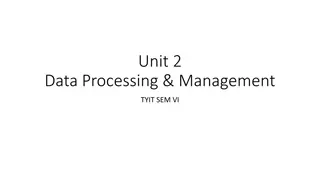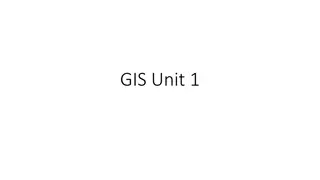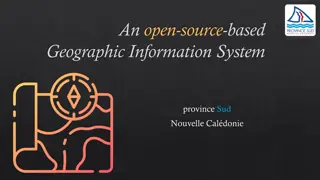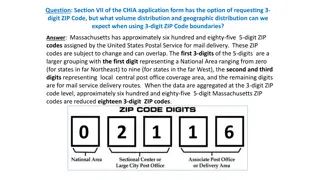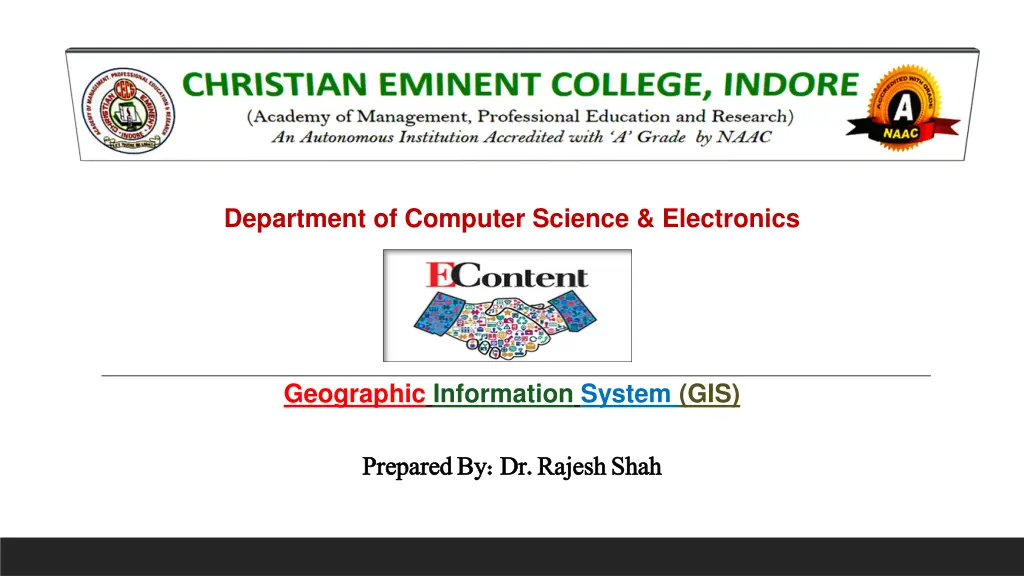
Understanding Geographic Information System (GIS)
Explore the world of Geographic Information System (GIS) and its components, applications, and working process. Learn about spatial data, hardware, software, data management, and more. Get insights into the significance of GIS in modern technologies and systems.
Download Presentation

Please find below an Image/Link to download the presentation.
The content on the website is provided AS IS for your information and personal use only. It may not be sold, licensed, or shared on other websites without obtaining consent from the author. If you encounter any issues during the download, it is possible that the publisher has removed the file from their server.
You are allowed to download the files provided on this website for personal or commercial use, subject to the condition that they are used lawfully. All files are the property of their respective owners.
The content on the website is provided AS IS for your information and personal use only. It may not be sold, licensed, or shared on other websites without obtaining consent from the author.
E N D
Presentation Transcript
Department of Computer Science & Electronics Geographic Information System (GIS) Prepared By: Dr. Rajesh Shah Prepared By: Dr. Rajesh Shah
Geographic Information System (GIS) Objective of presentation: Objective of the Presentation is to make students aware about the changes in technologies, applications and systems around us. Especially about Geographic Information System. To familiarize students with concept of Geographic Information system, its components, working & application. Prerequisite of presentation: Since this is the topic of very first unit of the syllabus, therefore no special prerequisite for the participants. Only knowledge of some basic terms like Hardware, software, data etc. is required.
Geographic Information System (GIS) What is a GIS ? Full Form of GIS is Geographic Information System. It is a framework for :- a. Gathering the data b. Managing the data, and c. Analyzing the data. ... It analyzes spatial location and organizes layers of information into visualizations using maps and 3D scenes.
Geographic Information System (GIS) What is Spatial Data? A very good example of spatial data can be seen in a road map. A road map is a two-dimensional object that contains points, lines, and polygons that can represent cities, roads, and political boundaries such as states or provinces. A road map is a visualization of geographic information.
Components of a GIS A working GIS integrates five key components: Hardware, Software, Data, People, and Methods. Components of a GIS Hardware Hardware is the computer on which a GIS operates. Today, GIS software runs on a wide range of hardware types, from centralized computer servers to desktop computers used in stand-alone or networked configurations. 1.Hardware 2.Software 3.Data 4.People 5.Methods
Software GIS software provides the functions and tools needed to store, analyze, and display geographic information. Key software components are Components of a GIS Tools for the input and manipulation of geographic information A database management system (DBMS) Tools that support geographic query, analysis, and visualization 1.Hardware A graphical user interface (GUI) for easy access to tools 2.Software 3.Data 4.People 5.Methods
Data Possibly the most important component of a GIS is the data. Geographic data and related tabular data can be collected in- house or purchased from a commercial data provider. A GIS will integrate spatial data with other data resources and can even use a DBMS, used by most organizations to organize and maintain their data, to manage spatial data. Components of a GIS 1.Hardware 2.Software 3.Data 4.People 5.Methods
People GIS technology is of limited value without the people who manage the system and develop plans for applying it to real- world problems. GIS users range from technical specialists who design and maintain the system to those who use it to help them perform their everyday work. Components of a GIS 1.Hardware 2.Software 3.Data 4.People 5.Methods
Methods A successful GIS operates according to a well-designed plan and business rules, which are the models and operating practices unique to each organization. Components of a GIS 1.Hardware 2.Software 3.Data 4.People 5.Methods
Geographic Information System (GIS) Thanks








